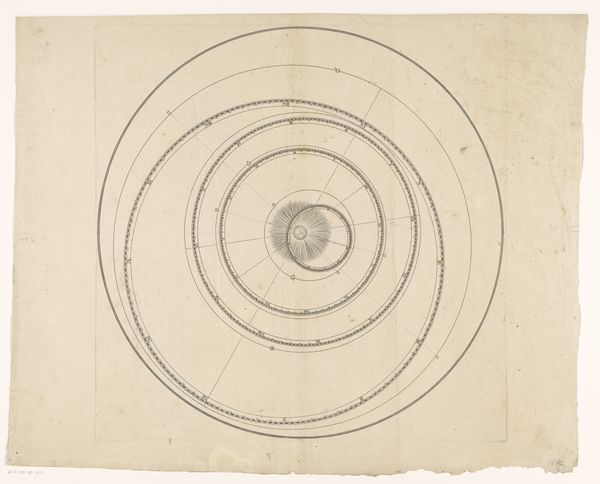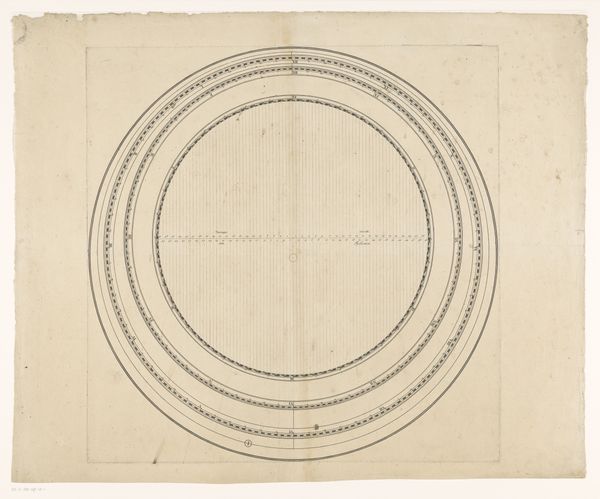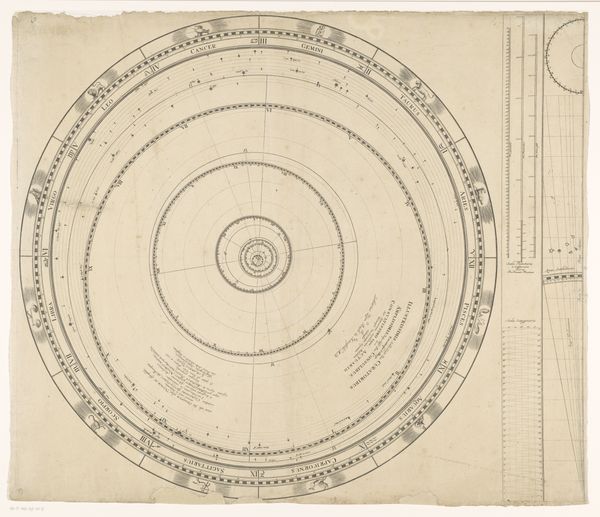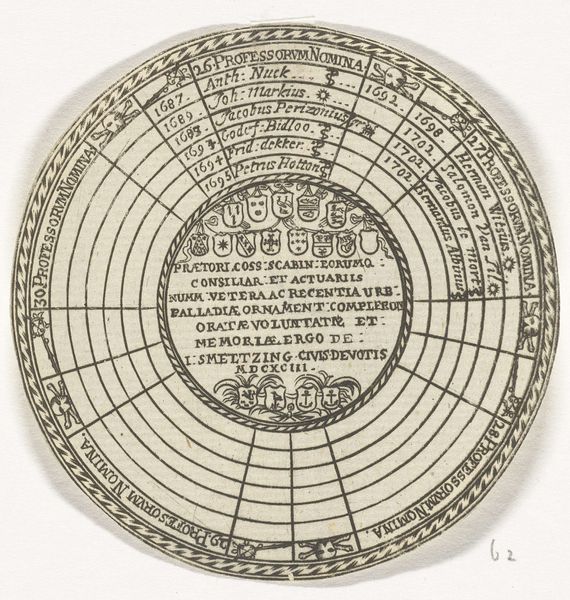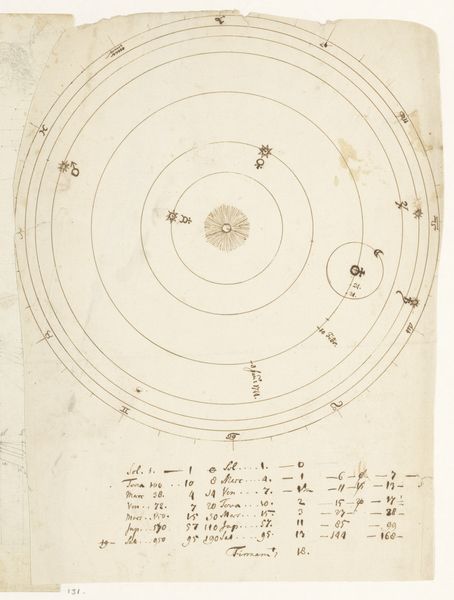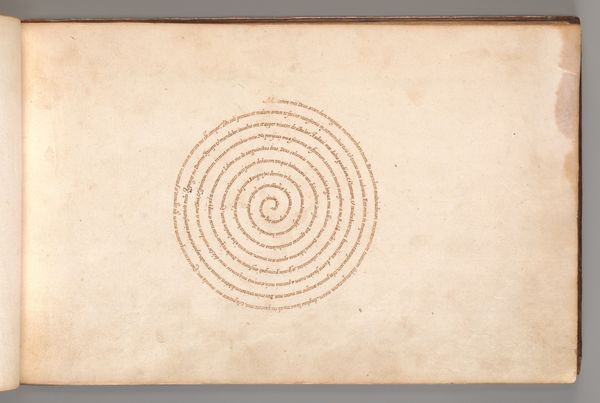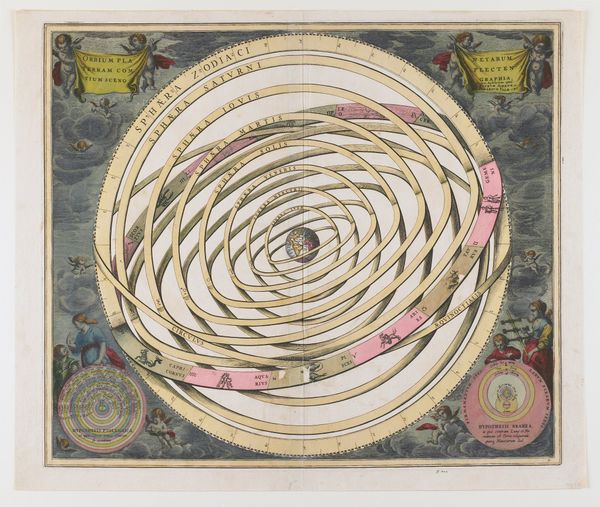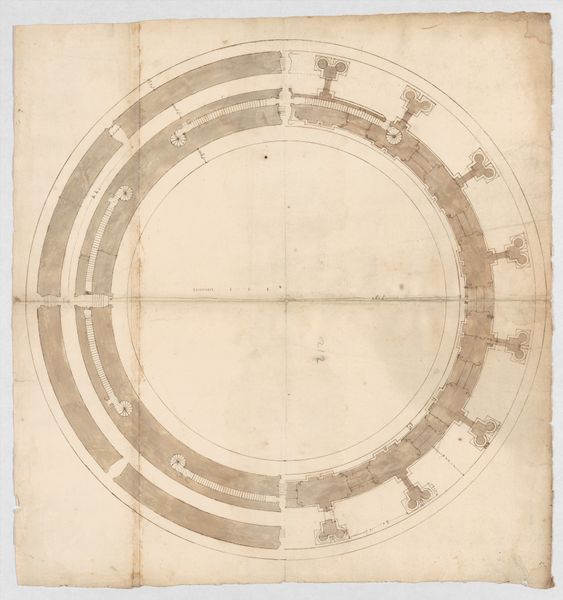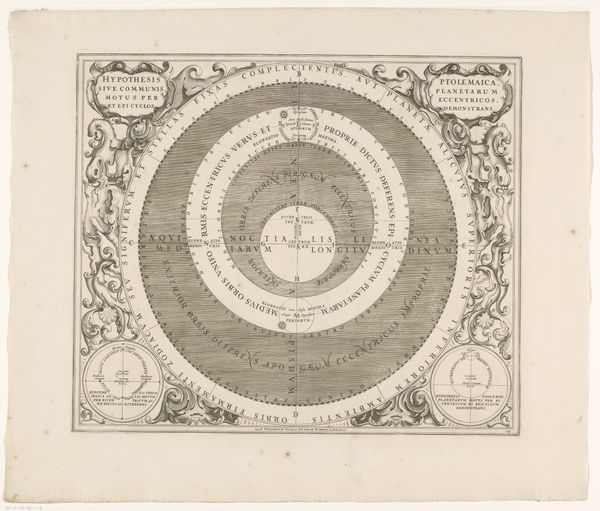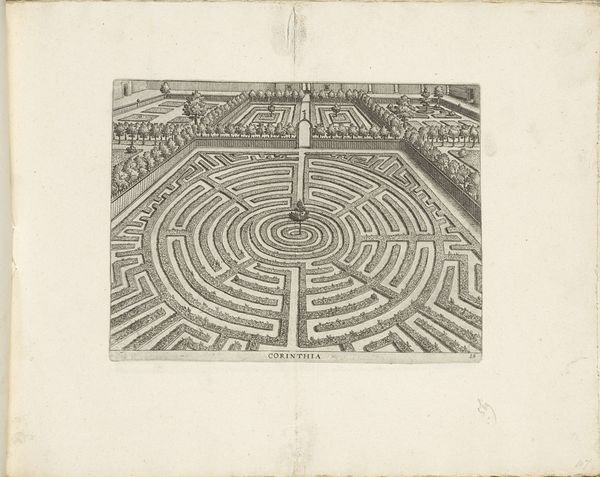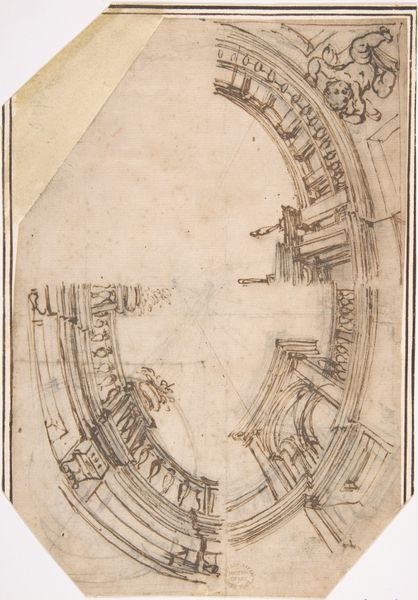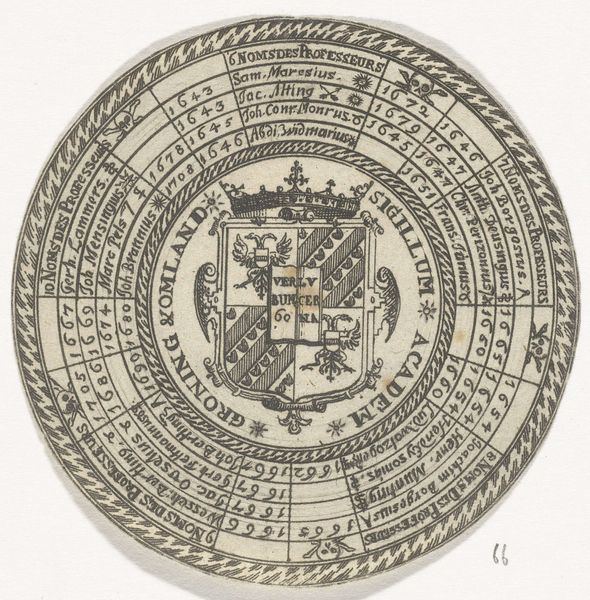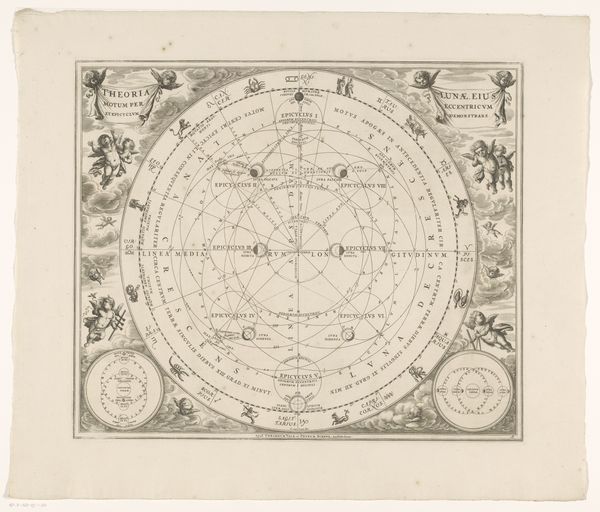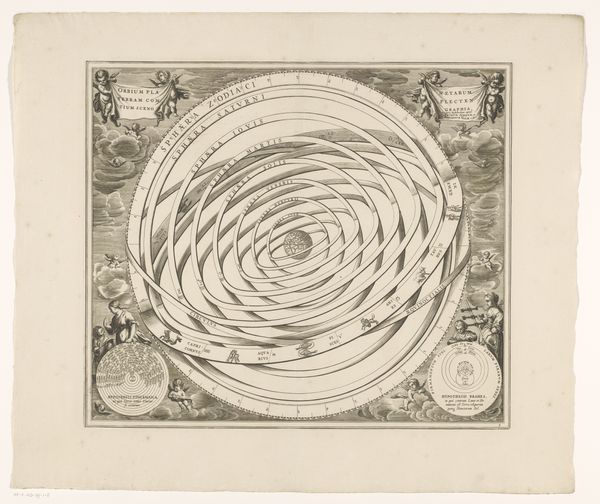
drawing, paper, ink
#
drawing
#
paper
#
ink
#
geometric
#
line
Dimensions: height 170 mm, width 148 mm
Copyright: Rijks Museum: Open Domain
This is Jan Brandes’s “Labyrint,” a pen drawing from the late 18th century in the Netherlands. It's a simple image, yet speaks volumes about the period's intellectual landscape. Labyrinths, historically, evoke both classical mythology and Christian allegory, representing life's complexities and the search for truth. During the Enlightenment, they became metaphors for reason's path through confusion. Brandes, an artist deeply engaged with his era, likely intended this labyrinth as a commentary on the social structures of his time. The Netherlands, then a republic, was navigating its own intricate political landscape. To fully understand Brandes's work, we need to delve into the visual culture of the Dutch Republic, examining its artistic traditions and intellectual debates. We can research archival documents to reveal the social and institutional contexts that shaped Brandes's artistic vision. The meaning of art always remains contingent on the context in which it was made.
Comments
No comments
Be the first to comment and join the conversation on the ultimate creative platform.
